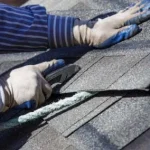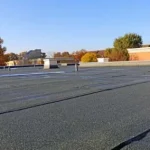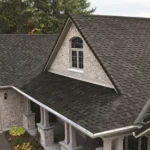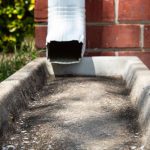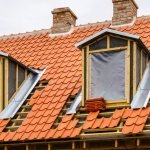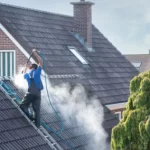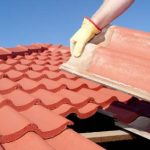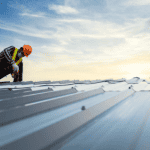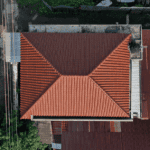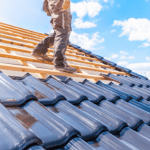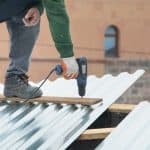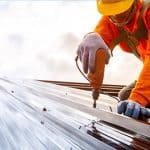
Choosing the correct materials is essential for a roof that is durable, has a longer lifespan, improves the curb appeal of the home, makes it more energy-efficient, protects it from various weather factors, and, most importantly, fits the budget.
Asphalt shingles are the most popular roofing material for most households and roof replacements. They are not, however, appropriate for every style of roof. Shingles should not be used to cover low slope or flat roofs in particular. Despite this, some roofing contractors continue to place asphalt shingles on these roofs. This not only exposes the shingles to damage, but it also nullifies any guarantees that may have been provided to safeguard your roof investment. To avoid these problems, this article will help you learn why asphalt shingles are not suggested for low slope or flat roof replacements.
Understanding Low Slope or Flat Roofs
Roof Pitch:
The steepness or slope of your roof is referred to as its pitch. It is critical in deciding the type of roofing material that is appropriate for your property. The pitch of a roof is computed by dividing the vertical rise by the horizontal run. Typically, this is stated as a ratio, such as 4:12. The steeper the ceiling, the higher the ratio.
The phrase “flat roofs” is a little misleading because these roofs are not actually flat. They have an extremely modest slope that appears level to the naked eye. When the pitch of a roof is less than 2:12, it is termed low slope. This signifies that your roof has fewer than 2 vertical units (inches or feet) up for every 12 horizontal units out.
However, if you are doubtful about your roof type try reading our blog about Popular Commercial Roof Types to Consider for better understanding and do not jeopardize your safety by climbing onto your roof to assess its pitch. After a roof replacement examination by a local roofing contractor, you’ll learn the pitch of your roof.
Characteristics and Challenges of Low Roofs
Increased Foot Traffic:
Low slope roofs might attract more foot traffic than steeper rooftops since they are more accessible or even used as rooftop patios, etc. This implies that the roofing system must be able to handle the additional activity without failing. As a result, asphalt shingles are not always the best solution in this situation.
Draining Time:
The faster water and snowmelt can run down a roof, the steeper the slope. With a low slope roof’s minimal slope, that water will take significantly longer to drain, if at all. As a result, a low slope roof must have a mechanism in place to handle the increased pooling of water.
Pooling Water:
Pooled water can cause leaks in the roof system and create locations for moss and algae to develop. As a result, it is critical to use the best material available that will not allow pooled water to remain.
More emphasis on a larger area:
Some low slope roofs have a considerably bigger surface area, and the roofing materials will put more weight on the roof, increasing the danger of drooping and degradation. If you have a bigger area low slope roof, choose a lighter material such as rubber.
UV deterioration:
Your moderate or steeply pitched roof is most likely only exposed to sunlight for a portion of the day. It receives shadows that might help to cool it down after being exposed to the intense midday light. A low slope roof, on the other hand, is exposed to the sun for the most of the day, resulting in substantial UV deterioration. Fading and cracking can result from this wear and strain.
While these obstacles appear serious, they may be overcome by using the best roofing material available for a low-slope roofing solution.

The Problem with Asphalt Shingles on Low Slope Roofs
Asphalt shingles, in particular, are designed to perform best on roofs with a pitch of 4:12 or more. The problem with shingles on a low pitch roof is that they are more susceptible to water intrusion.
Shingles may not sufficiently guard against moisture infiltration on a low pitch roof because water drains more slowly. This may cause a slew of issues, including leaks, mold, and decay, all of which can jeopardize the structural integrity of your home.
The Consequences of Installing Shingles on Flat Roofs
Other roofing materials, in addition to shingles, should not be utilized on flat roofs. Understanding how shingles operate and the issues that might emerge when placing them on a flat roof can help you determine what other materials are not suitable for flat roofs.
Shingles, like fish scales, can protect your property from the elements such as water and UV radiation. When correctly placed, shingles are piled on top of each other in the same way that scales are layered. They provide an efficient water barrier by piling them from the bottom to the top of the roof. This layering allows water to readily travel up the top of the shingles and into the gutter system.
Shingles function well on roofs with a 4/12 or greater pitch. If the shingles are installed on a roof with a pitch less than 2/12, the system will fail because water will pool beneath the shingles. If water pools beneath the shingles, you will most certainly have a leaky roof.
Winter is an especially difficult situation because water may flow up the roof beneath the shingles as the temperature changes during the winter. When snow accumulates on the roof and is heated, it melts into water and pours down the roof. When the temperature lowers again, the water condenses into ice. As the water melts and freezes, it moves up the roof beneath the shingles, potentially forming an ice dam. When a big coating of ice builds at the bottom edge of the roof, this is referred to as an ice dam. It can add weight to the eaves and trap water behind the shingles, resulting in a leak.
Roofing materials that are stacked like shingles are ineffective on flat roofs due to the same layering process. Among these other materials are:
- Slate Shingles
- Clay Tiles
- Solar Tiles
- Steel Coated Steel
- Concrete Tiles
- Metal Panels
- Rubber Slate
The Benefits of Choosing the Right Roofing Material
The material used for the roof is crucial in determining the durability and lifetime of a low slope roofing system. Instead of asphalt shingles, use alternate roofing materials such as:
Modified bitumen:
A form of asphalt roofing intended for flat or low slope roofs. Layers of modified bitumen are placed to form a waterproof seal that prevents water intrusion.
EPDM Membrane:
A single-ply rubber roofing membrane that is extremely resistant to water, UV radiation, and temperature variations. EPDM is a popular choice for low pitch roofs since it is simple to install and has a long lifespan.
TPO Membrane (thermoplastic olefin):
A single-ply roofing membrane comprised of plastic and rubber. TPO is well-known for its long life, low energy consumption, and simplicity of installation. As a result, it is another viable alternative for low pitch roofs.
Metal roofing:
While metal roofing may be used on both low and high pitch roofs, selecting a type especially intended for low pitch roofs is critical. Due to their water-shedding capabilities, some metal roofing systems, such as standing seam or snap-lock panels, are well-suited for low pitch roofs. By choosing the right roofing material, you can assure the longevity and functionality of your roof, protecting your property from future problems.
Hiring a Professional Roofing Contractor
When looking for roofing contractors in your area, be aware of those who favor placing shingles on a low slope or flat roof. This is not an error, but rather a strategy to cut their pricing and acquire your business. However, this is a major warning signal that might lead to pricey roof replacements in the long term. While membrane roof solutions cost from $12.00 to $17.00 per square foot, architectural asphalt shingles cost approximately $6.00 per square foot. However, placing shingles on a flat or low slope roof will eventually cost you more money in the long term. When it comes to roofing, don’t let price be the main deciding factor. Select a professional contractor who will propose the best materials.


